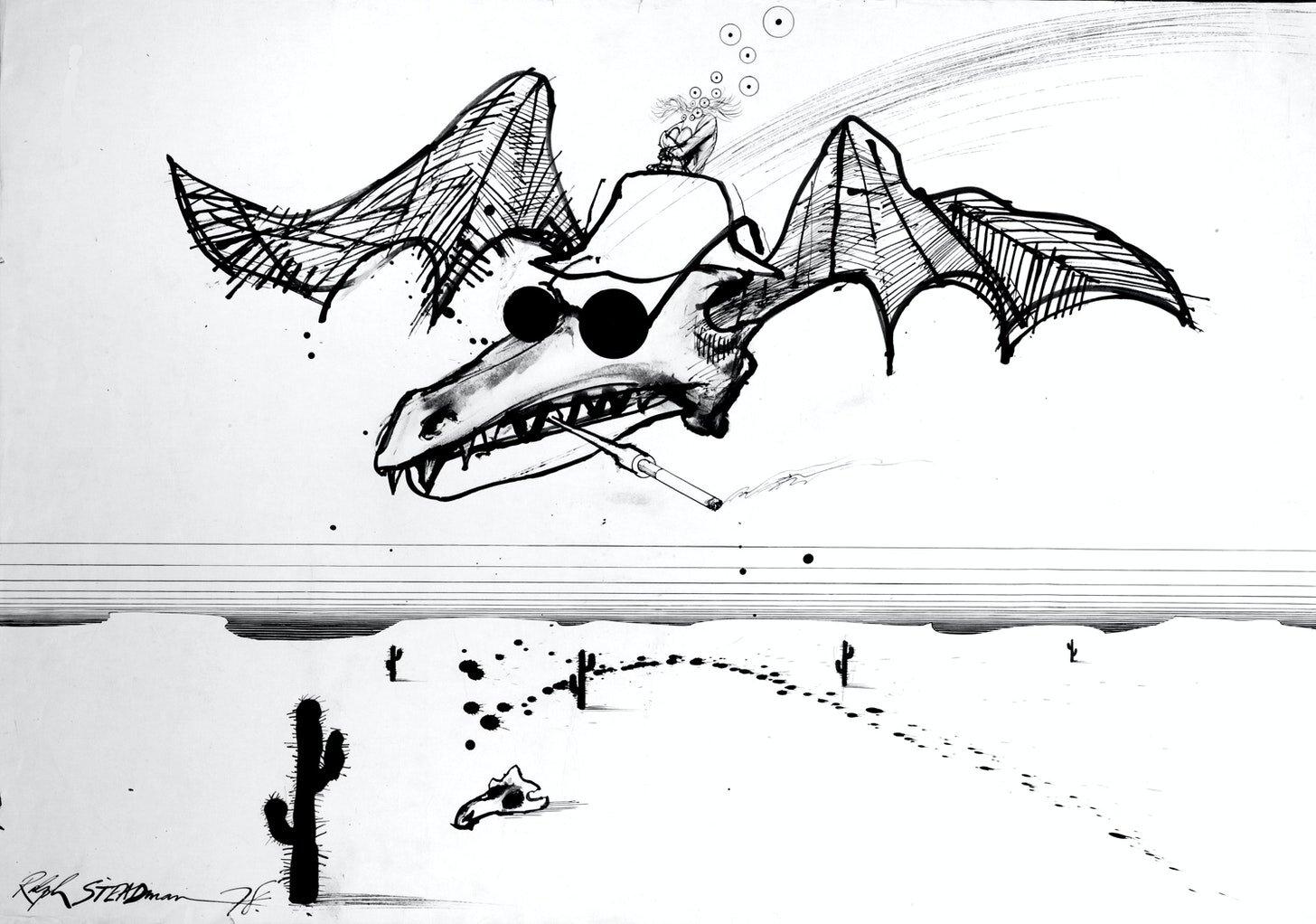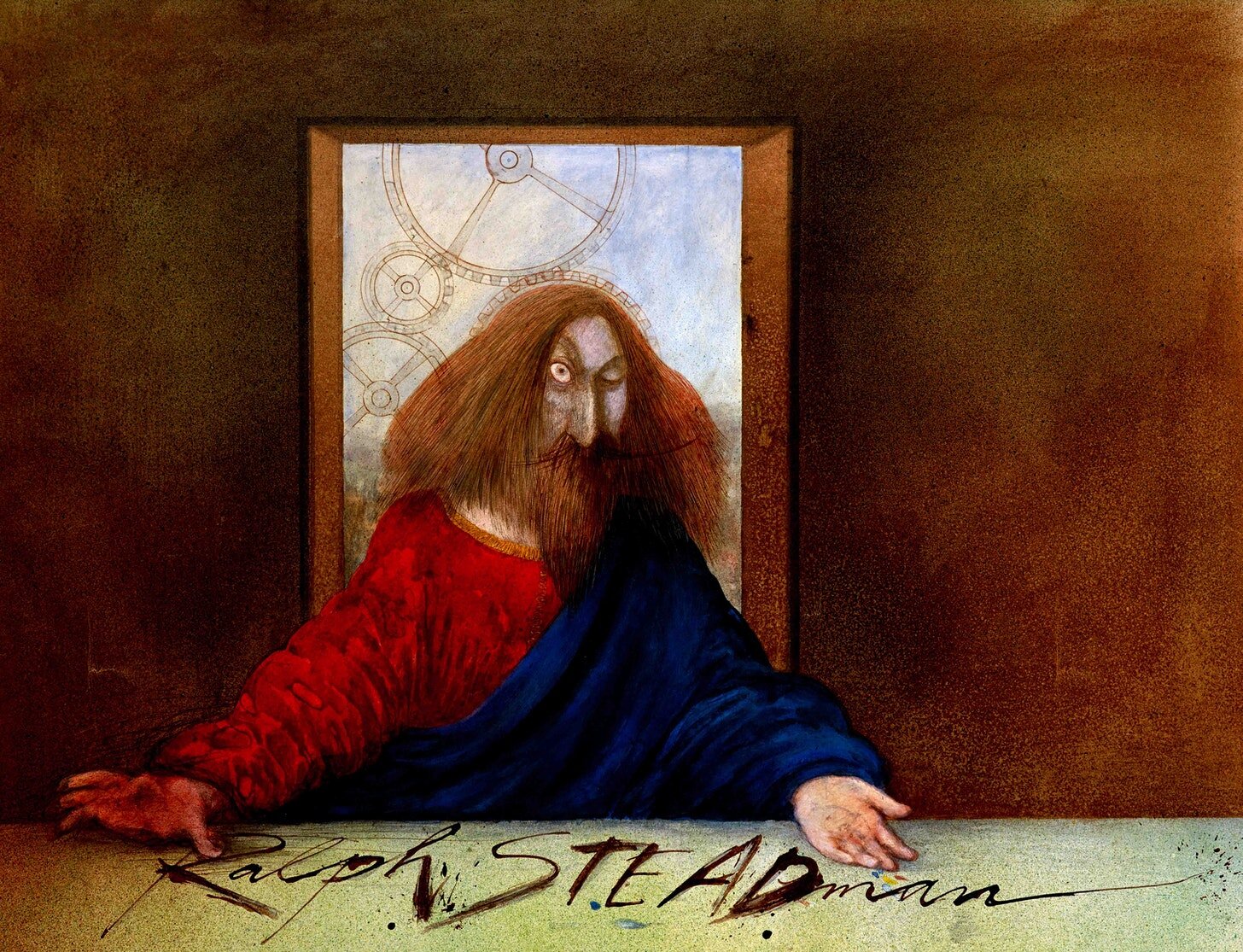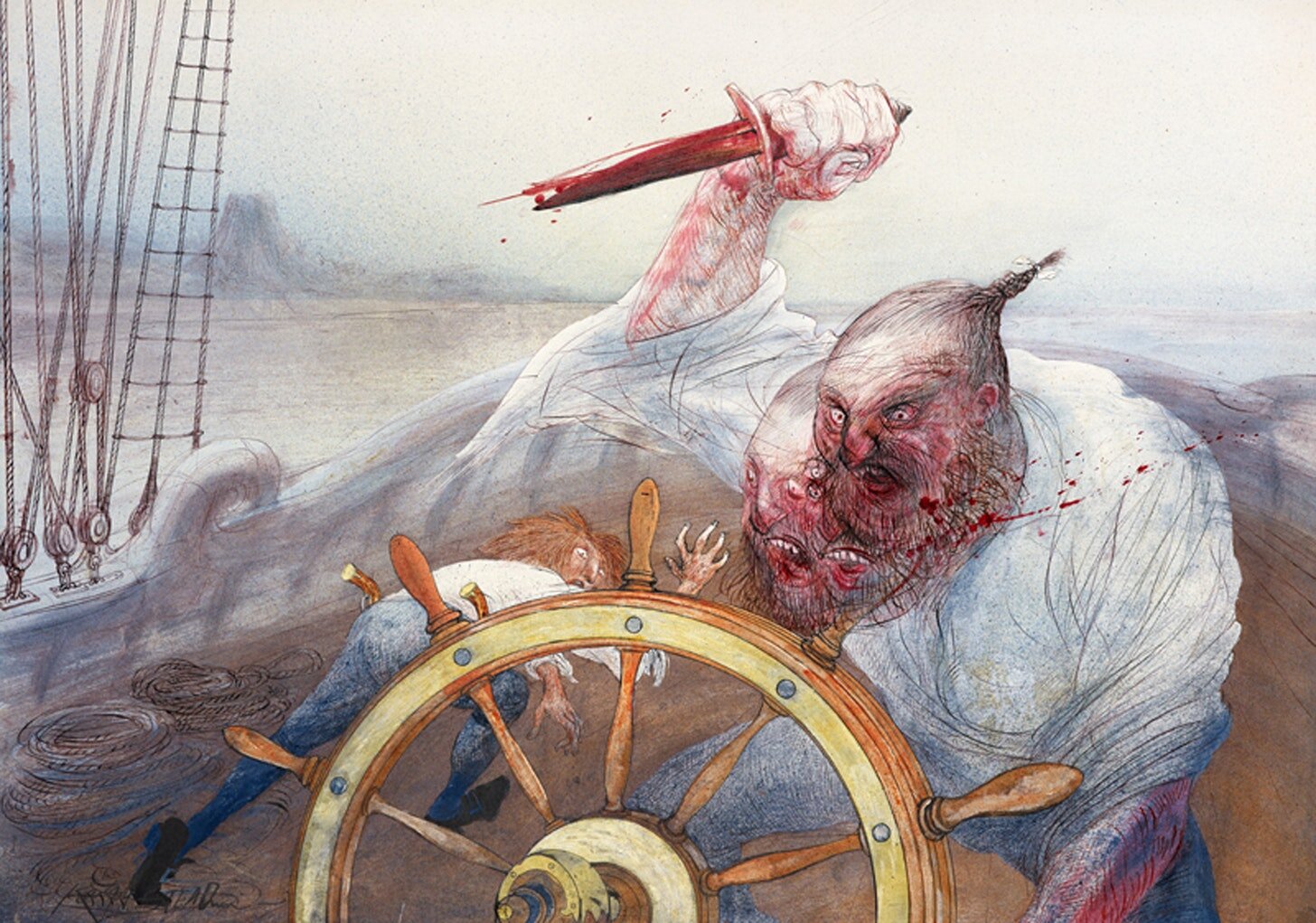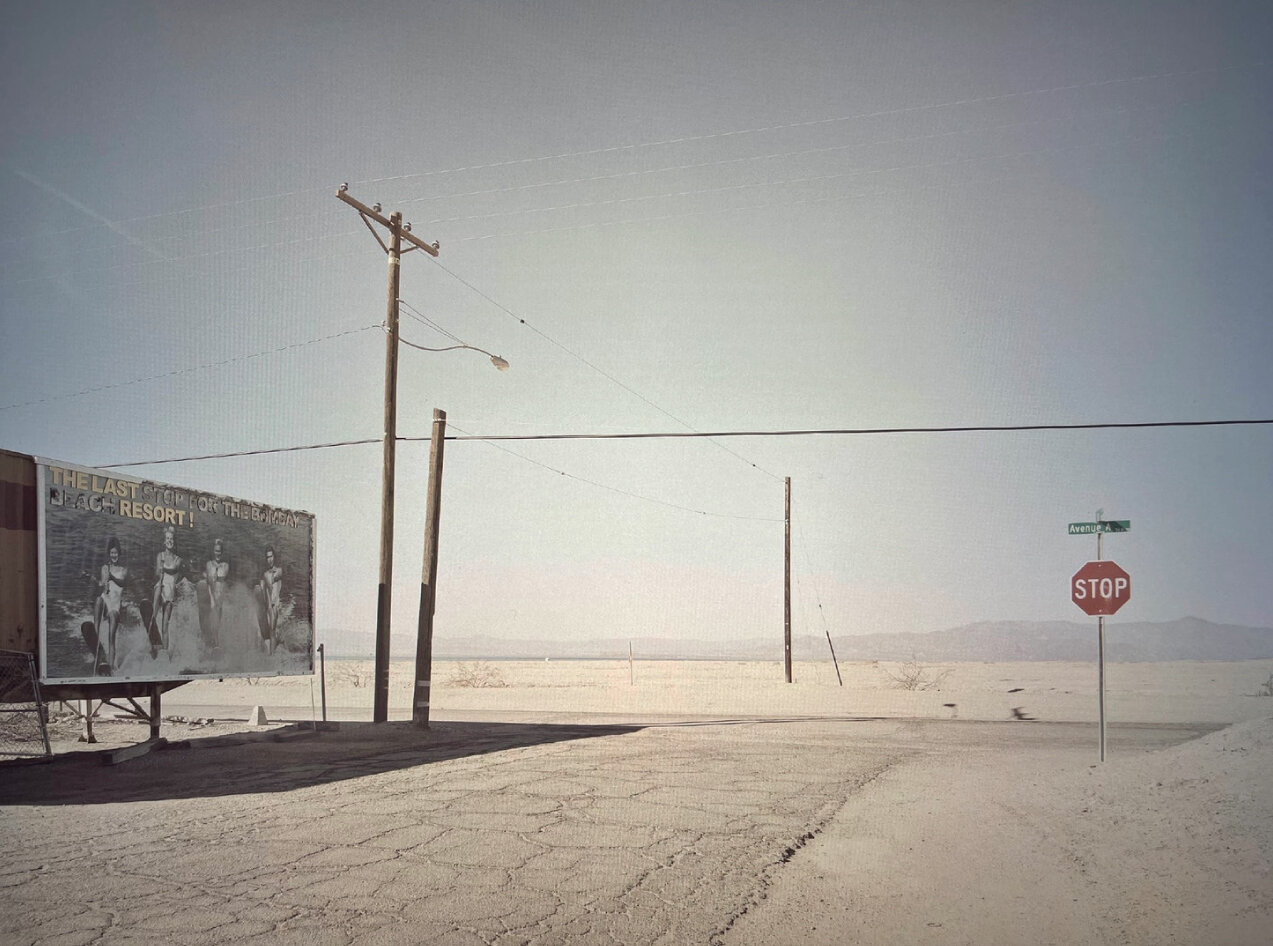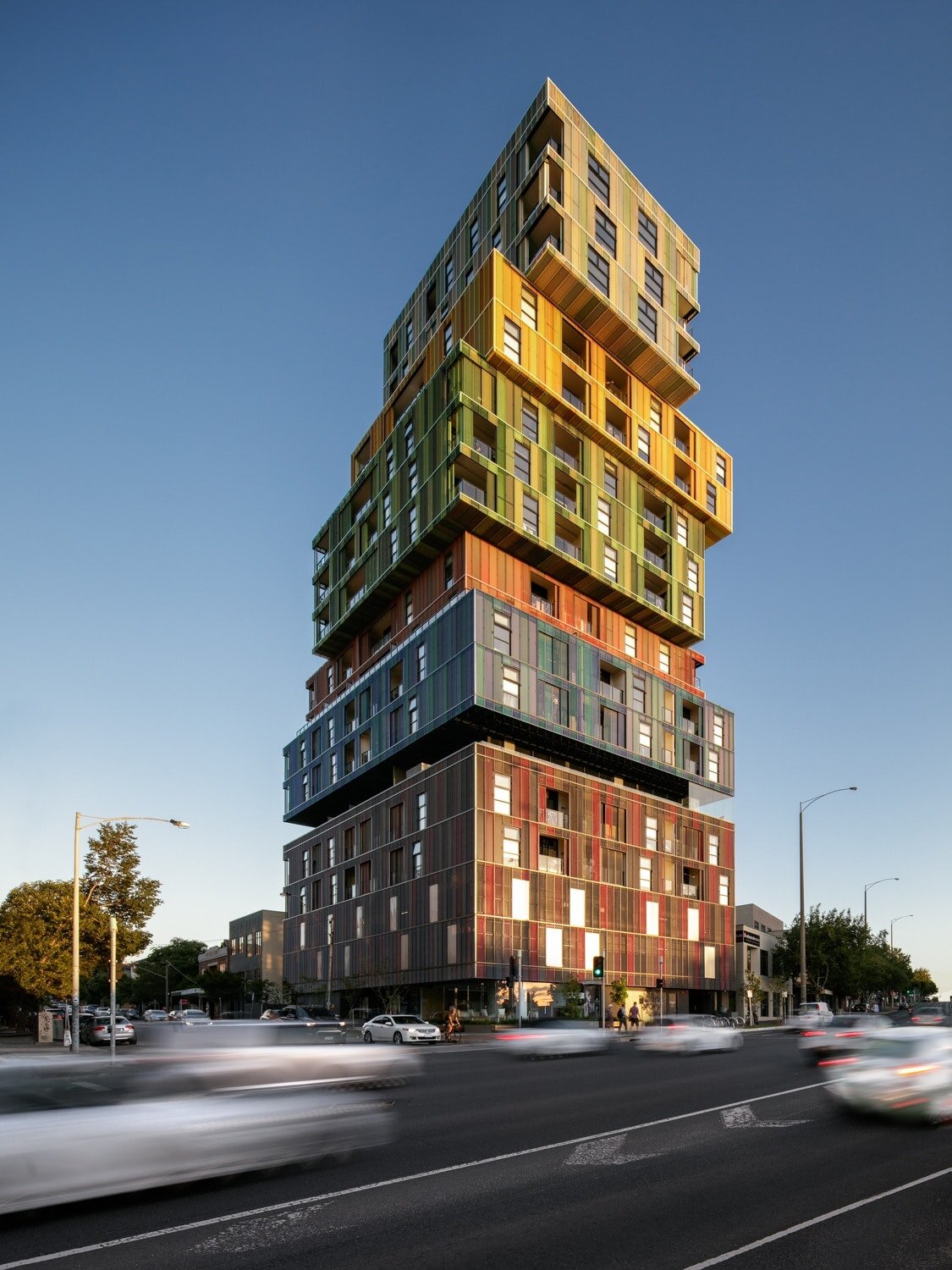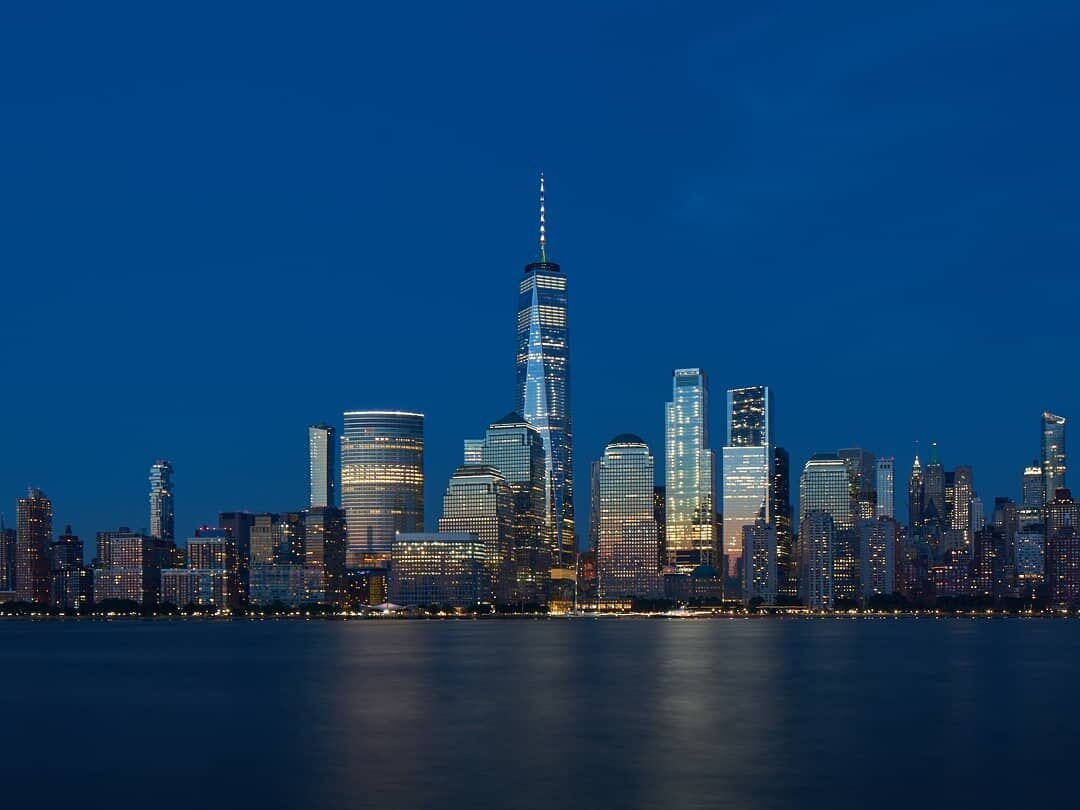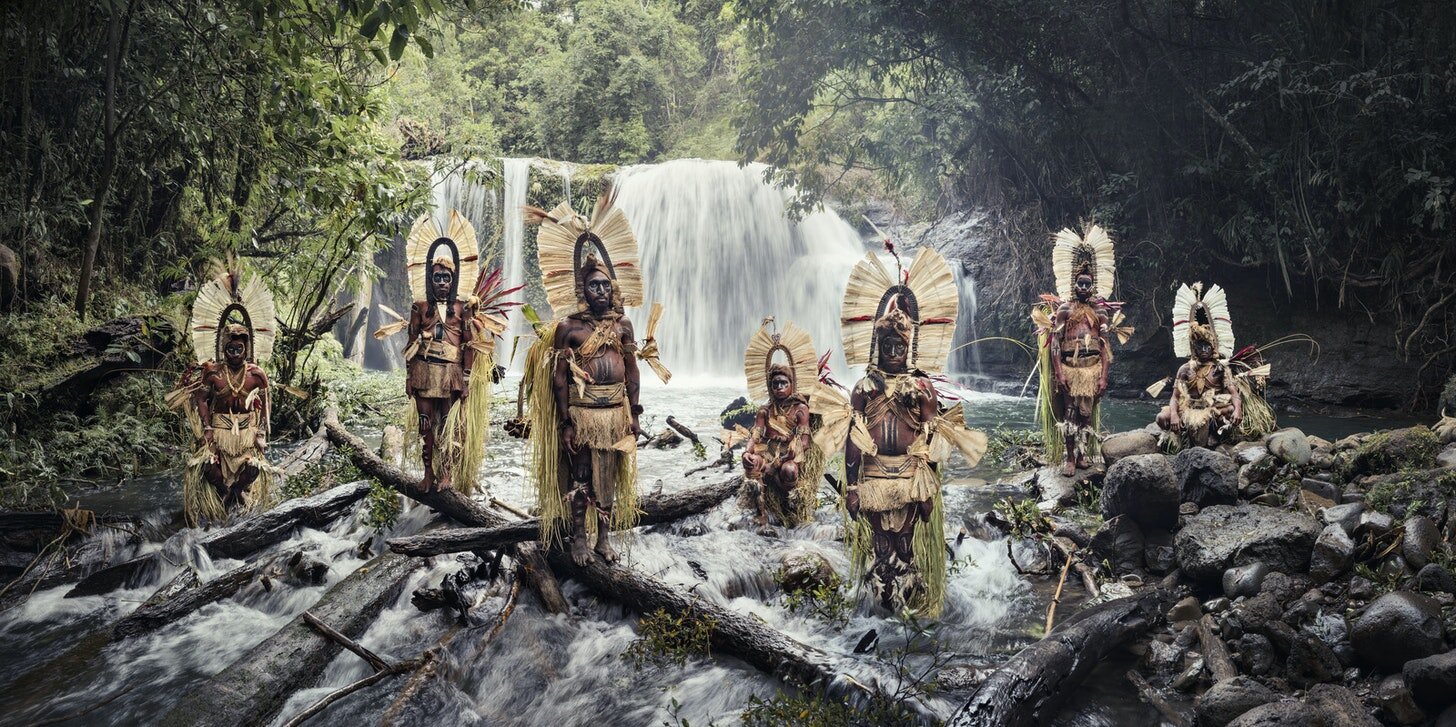Bossy Traits!
Art by Ralph Steadman
Not all bosses are leaders.
Increasingly people follow people and not titles.
Some bosses have titles but few genuine followers. Their teams genuflect in their presence but rarely respect and often abhor them in private.
On the other hand, many bosses are true leaders, and they wear their titles lightly.
These individuals exhibit the five key traits of leadership:
Competency/Capability: They know and excel at their craft which they hone, sculpt and keep relevant in changing circumstances.
Integrity: They face reality. Are transparent. Face facts and align with reality. They engender trust. They are accountable.
Empathy: They care and are concerned about others.
Vulnerability: They accept mistakes and are aware that they may not know all the answers. They surround themselves with people who have complimentary skills and are not afraid of being challenged.
Inspiration: They recognize that people choose with their hearts but use numbers to justify what they just did. That in dark times one needs to inspire and engender hope.
But even the most admired leaders sometimes are hard to deal with from time to time, because decision making is difficult and stressful especially when there is significant financial risk, competitive threat and tight deadlines.
As a result, they exhibit the traits of bad bosses.
Sometimes all of us do.
Because we are human.
But most of us rarely fall into deplorable boss mode for more than a day or two and usually apologize and correct our behavior.
Others tend to continuously vibrate and hum with odious bossy traits.
It is important to recognize the bossy traits of bad bosses so that if we work with one of these bosses or when under pressure, we begin to exhibit these traits ourselves, we can recognize and address such behavior.
The five bossy traits (bad bosses have a doctorate in one of these and a master’s degree in a couple of others) are 1) narcissism, 2) micro-management, 3) drama, 4) scheming and 5) back-stabbing.
Art by Ralph Steadman
1. THE NARCISSISTIC GOD. These bosses believe that only they know the answer, only they are capable of handling the major meeting, and only they should get the credit for their teams’ success. They often believe they transcend the company. In many instances, they create a godlike cult that worships their every move, using public relations and social media to spread the word.
Their people worship them by following their commandments. Direct reports lose their own individuality when they’re working for Narcissistic Gods; they also lose their ability to draw upon their own experiences and skills to solve problems or capitalize on opportunities. Their story gets lost, and they become mindless followers.
Art by Ralph Steadman
2. THE MICROMANAGING FIDDLER. These folks are terrific operators—they know how to get things done—but as managers, they retain their obsessive detail orientation. They tell their people what to do and insist they check in with them at every stage. They are insecure and can’t let go of anything. They often manage via spreadsheets or the need for slavish following of systematic procedures. Micromanaging Fiddlers fail to understand the outside world since they are constrained by the cell of the spreadsheet or slaves to historical procedures.
Art by Ralph Steadman
3. THE OSCAR ASPIRANT. These types emote, loudly and dramatically. Erratic and unpredictable, they are a roller coaster of emotions. They greet bad news with histrionics and good news with hyperbole. These drama kings and queens are tolerated by management because they can be effective in certain roles—they can present well and even inspire others with their visions and speeches.
At the same time, they make their people crazy. People are expected to praise the boss’s performance or to raise their spirits. More to the point, these managers only want one story told, and it’s theirs. As a result, direct reports aren’t allowed to bring their own ideas, experiences, and views to the group.
The story of the boss overwhelms everything and everyone else.
Art by Ralph Steadman
4. THE SCHEMING SPHINX. This is the person who smiles, blows air-kisses and oozes charisma and friendship, says nor shares anything substantial, while sucking up as much information and probing for vulnerabilities.
A blend of insecurity and bully juice wrapped in a blanket of charm while oozing calm and friendliness.
Often more style than substance. More network than intellect. Retains power through potential threat and ability to harm versus innate talent or true goodwill.
Art by Ralph Steadman
5. THE DOUBLE-CROSSING ASSASSIN. While the previous four types are expressive (or anti-expressive in the case of the Scheming Sphinx) in their terribleness, Assassins are soft-spoken, well-behaved, and self-controlled.
Behind closed doors, however, they take credit for other people’s work, create animosity by speaking ill of people to others, and find ways to trip up others and make them fail. They are like Reese Witherspoon in the movie Election: smiling and ruthless. They win people’s trust and then undermine them.
People working for Assassins become guarded and monitor everything they say and do for fear that it will be used against them. They carry out tasks with little creativity and take little risk, knowing that even a minor slip up will give the Assassin an opportunity to target them. They fear for their work lives—keeping a low profile and cleaving to their tasks is the only way they can escape the Assassin’s bullets.
All five bad boss types know that if they deliver their numbers and meet their objectives, they can continue to exist in most organizations. This is especially true if these organizations have spreadsheet-dominant cultures where measurement is constant and meeting quarterly numbers is the highest priority.
Bad bosses are the enemies of balance; they provoke extreme reactions from their people. If the employees don’t leave the company, they work in fear or expend all their energy on managing their managers. No doubt you’ve witnessed employees go into survival mode to deal with a bad boss. They become obsequious, robotic, and myopically focused on their boss’s every action and reaction. As a result, they may be able to carry out assigned tasks effectively and help their bosses meet their numbers and objectives, but they are loath to take risks or deviate from norms.
At a time when innovation is crucial, they fall short because innovation requires behaviors that bad bosses hate. The balance is tipped heavily in favor of playing it safe.
Bad bosses unbalance companies in another way: they force people to face inward instead of outward. They spend time focusing on what their bosses have done or how to manage their idiosyncrasies, instead listening to the marketplace and customers.
The good news is that as we enter the era of the Unbundled Workplace folks with these bossy traits will find themselves increasingly impotent in their ability to command and control. There is no big office to telegraph power or a campus like facility in which to create cultish followers. No assistants to block access and an increasing dilution in the power of a rolodex when true talent connect with true opportunity in real time!
Our real bosses are the people we wish to develop relationships with and sell to—not someone in our organization or even our clients’ organizations. The best thing we can do for our internal bosses is to make sure our external bosses do not fire us. Which is why looking outside and seeing tomorrow versus looking inside and being nostalgic for yesterday helps provide balance.
Bad bosses keep us staring at our shoes. Good bosses encourage us to lift our heads and look around.
Ruptures in the Mediascape
Photograph by Guy Havell
Every decade or so there are significant shifts in the media landscape.
In the early 80’s we saw the birth of cable, the 90’s the beginning of the World Wide Web, less than a generation ago we witnessed the explosion in social media and the criticality of mobile phones as revolutionary creation, consumption and distribution platforms/instruments.
We are now in the midst of what maybe the most significant rupture in the mediascape whose implications on business and society are only beginning to be sensed. A rupture that is not just driven by advances in technology but a very deep wrinkle in the very fabric of every element of how media, messaging, content, information is created, designed, distributed, consumed, shared and trusted.
Surprisingly the streaming wars are unlikely to be as intense and in many ways will be more of a challenge to marketers as they lose opportunities to reach people as the four dominant global streaming contenders ( Netflix, Amazon Prime, Disney+ and Apple+) will likely remain advertising free. In individual countries the Big 4 maybe joined by a couple of other country specific players. ( HBO Max and Peacock are likely to be somewhat scaled players in the US assuming that their parent companies of AT&T and Comcast can invest in them and also fund/defend against 5G since connections are their bread and butter business).
Photograph by Guy Havell
1) From the Dynamic Duo to the Seven Marketing Mongrels
While the Google and Facebook family still dominate in a majority of the non Chinese landscape, they have been joined by five very viable options in Amazon and four fast growing and scaled platforms of Twitter, TikTok, Pinterest and Snap whose stock prices have now been on an absolute tear providing them with ammunition to buy a range of companies and continue to attract and retain talent from the big giants. TikTok is the fastest growing platform amongst these and it’s impact is seen in both its massive year to year growth (almost a 10X growth in revenue in 2020) but also in how an entire eco-system of content creators, partnerships, and e-commerce integrations is emerging.
All seven of these platforms are continuing their journey from pure breeds to mongrels. The old designations of search, e-commerce, social and mobile are very yesterday and should be dropped pronto. These are multi-media, multi-able marketing and business platforms. They integrate commerce and lead generation; they can be micro-targeted or scaled up. They can provide a blend of content creators and influencer networks to accelerates marketer’s distribution footprints and storytelling and content possibilities.
In the United States these Seven Marketing Mongrels are being joined by at least two other major players which are Walmart and Target which are investing deeply in becoming media companies. Here too, one will see the blending of messaging, utility, distribution, commerce across the consumer/customer journey.
Photograph by Guy Havell
2) Expanding from Colonization of the Eyes to the Colonization of the Ears
TikTok is the first stream which requires you to turn the sound up. Music is integral to the experience. We are now in a world of sonic explosion from the dramatic rise in usage and value of podcasts, to the aural hardware competition between Apple, Bose, Sony, Sennheiser for headphones to feed your ears to the Harman Kardon, McIntosh, Bose, Burmester and Bowers and Wilkins battle to make your car the best concert hall. Voice with Alexa, Siri and Google is now increasingly the new interface. And let us not forget the current “it” platform of Clubhouse which is a strange new fusion of live and on demand call in talk radio.
Sounds are intimate and they stir memories and in the form of music take you where you want to go. Sounds are fluid, flexible and make for a very agile cost-effective fabric to stitch and make the marks of a Brand. As voice grows as an interface and machine learning progresses to a level where seamless translation between languages as well as other advances become broadly available many new possibilities will arise providing utilities, customer support and much more. For more on the new sonic landscape click here.
Photograph by Guy Havell
3) The Out of Home Media Renaissance
Modern technology hurt every legacy media from newspapers to magazines in particular and radio and television to a lesser degree but enabled OOH, the previously stepchild of media which was usually dealt with by “specialists” in some basement room. But now boards have become screens that are brighter, cheaper and everywhere. The human painters and poster hanger uppers have been replaced by real time programming where messages can be personalized down to weather conditions and locality but can be scaled up to national levels as the screens are increasingly networked. And given when you are walking or driving you usually are not also looking at media on your phone it actually is a media that garners the most valuable commodity which is attention and with screen sizes of epic proportions creates a wide canvas of messaging possibilities that reward this attention with creativity. Finally, as we spend more time in the digital, augmented and virtual worlds it will be one media which will dominate IRL (in real life).
Smart companies will integrate OOH into the mainstream of marketing and media strategy and no longer leave it isolated. It is the ultimate mongrel media in its abilities to chameleon like shape shift from local to national, from static board to moving video. Its ability to channel a selfie into a towering image on Times Square also makes it a key social media enabler and enhancer. Nothing is more Instagrammable. More on the future of OOH here.
4) The “Cook/Zuckerberg” war is not just about different approaches to privacy and business models of Apple and Facebook, but also about how key messaging is to the future of the two companies
Photograph by Guy Havell
For those who have been to China and used apps like WeChat it is clear that messaging apps in the US are infants compared to what they can grow up to be. WeChat integrates every aspect of life from banking to ride hailing to social media and more. It is a landscape and an eco-system built around a gushing river called messaging. If Facebook were ever broken up my bet would be that Mark Zuckerberg would end up running WhatsApp which is where most of the potential growth of his company is. This is why he invested $5.7 billion for a 9.9 percent stake in Jio Platforms in India. He probably hopes that WhatsApp, the dominant messaging platform in India will evolve into a WeChat for India ( Many Chinese apps including TikTok are now banned in India). Tim Cook is also major player in messaging with over 1 billion iPhones in the world all with Apple Messaging/Facetime.
With the exception of gaming, people spend more time on messaging apps than any other app or platform. The future of Fintech, identity and mobile commerce are going to be deeply integrated with messaging.
To be competitive in the future focus on messaging strategies, partnerships and opportunities.
Photograph by Guy Havell
5) The Rise of a New Content, Creator and Distribution Eco-system
The acid of modern digital technology and networks is burning apart the muscles that held content and distribution together and that enabled a hierarchy that separated the esteemed publisher/ editor/creative director from the masses and that allowed windowing, fixed programming schedules, unnecessary bundling and “quality control”.
The questions we will all be grappling with are:
Who is a gatekeeper? What is a media company? Who are creators? Who do we trust?
Andreessen Horowitz now A16z, a multi-billion-dollar firm that invests across industries, announced in January that it's building a new and separate media property. "We want to be the go-to place for understanding and building the future, for anyone who is building, making, or curious about tech," it said in a blog post.
Also, Elon Musk interviewed the CEO of Robinhood in Clubhouse (both a16Z comp-anies) which became a newsworthy event and put Clubhouse on the map with a massive spike in sign-ups. These and other recent events upset many journalists including some highly innovative and future forward ones like Jessica Lessin of the Information who in a very passionate piece entitled “ The Nightmare Awaiting the News Industry” questioned the lack of real journalism or transparency among other issues.
Then there is the reality of a new generation of creators on You-Tube and TikTok, the fact that for every journalist there are five public relations experts, that many writers utilize platforms like Substack to go directly to readers and monetize their work. Today the memes of Elon Musk and others scale far greater than any of the major networks. Kylie Jenner with her 140 million followers has greater potential reach than the Superbowl! The line between content creator and influencer and media company has blurred beyond recognition.
Today any investor or trader worth their salt looks beyond Bloomberg, Thompson, the FT and the WSJ by monitoring Stocktwits, Reddit’s Wall Street Bets and Seeking Alpha Pro. There is a wide chasm between the media behaviors of those in power and those who are the big audiences of today.
The Year of Immunity
1.2021: The Year of Immunity.
If 2020 was The Year of Covid-19, 2021 will be known as The Year of Immunity.
It will take at least all year for a majority of the people in many countries to be inoculated.
It is increasingly apparent that 2021 will be like 2020 with most people working from home, events and restaurants partially filled if they are allowed to occur or open, schools grappling with how and if they restart, as well as a slew of other challenges.
We are coming to the realization that while there is a light at the end of the tunnel, we are only slightly more than halfway through the tunnel.
This is creating significant mental anguish in large parts of the population.
Mothers with young children are amongst the worst impacted with millions of women having to give up work and millions of others who lost work due to the shutdown finding that the period of their unemployment has been extended and they themselves are over extended.
The Year of Immunity will at its end bring the great benefit of controlling the disease, eradicating its most harmful aspects and enabling a less isolated life.
But the implications of 18 to 24 months of a significantly altered form of living will bring about it many more permanent changes in every aspect of society than if the shutdown had been shorter.
A recent Wall Street Journal article hammers home the reality that we are likely to live with Covid for years like we do with the flu, measles and HIV, even after many of us are vaccinated. Many industries are now planning for this “new strange” as it is clear there is going to be no “new normal”.
2. The Unbundled Workplace.
In the first months of the lock-down everyone was counting the days to when they could return to the way they worked in December 2019.
As 2020 progressed many employees and management found that for most industries there was no significant drop off in productivity from a distributed workplace and the drawbacks of not being with teams was often offset by the increase in flexibility and reduction in travel time and reduction in costs associated with working from home.
The new model that was being planned for was now a hybrid one with maybe 2 working days a week at the office and the others at home.
There is now however a new emerging mindset that the half at home and half at the office model makes very little sense. The Unbundled Workplace, which is gaining traction, suggests a future with very little time being spent in the office you left behind in March 2020.
The Unbundled Workplace will combine four spaces:
a) Home: The safety, the flexibility, the ability to focus (especially if school resumes and children are not underfoot), and the cost and time savings of not having to travel to work will ensure that the home office will be foundational space that most people will spend the majority of their time getting work done.
b) Distributed Work Pod: Either to enable gathering of teams or the option to work outside the home many companies will sub-lease space (e.g., We Work, Regus) near where clusters of their employees live. This will enable teamwork and getting away from home with a far more time and carbon friendly footprint.
c) Periodic Events/Experiences: Automattic (owners of WordPress and Tumblr) is a1800 person global company where everyone works remotely but teams get together at a location of the team’s choice (often exotic ones) for a few days every quarter to collaborate, build relationships and learn from each other. Every year for one week the entire company gets together for education, inspiration and bonding. Increasingly companies will create periodic events and experiences to offset the downsides of working at home which are difficulty in establishing and building relationships, culture sculpting and skill enhancement. There is no reason that this needs to be done in the offices left behind or a large capital expenditure needs to be allocated to re-configure spaces when far more impactful and cost-effective external options are available.
d) The Legacy Office: The old central office or HQ will remain but will be significantly downsized and be more of a gathering space for some key training or client meetings, a roosting place for senior management and a museum of relics and artifacts that are the key to the story telling and culture of the company. Most employees will likely spend less than 20 percent of their working year at this office.
When you hear the word hybrid model do not think it is about half time at the office and half time at work but rather think of four spaces with your old office being a tiny sliver of the time you spend in your future “workspace”.
A combination of two years of working differently which includes people moving to different cities, changed behavior and expectations of employees and clients combined with modern enabling technology is going to accelerate the great unbundling.
The second order impact of these changes on central business locations from parking to restaurants to hotels is going to be seismic. Cities are not going away but they are going to be dramatically re-structured. The Great Re-Wiring discusses some of these impacts.
In the Year of Immunity, it is unlikely that any HQ, any downtown and any old way of thinking about “the office” can be inoculated from the dramatic change underway.
And every person regardless of level is going to have to hone new skills and approaches to career management including learning to work as a “company of one” which is discussed in The Future of Work.
3. Immunity Inequality.
Bill and Melinda Gates warned in their annual letter that the lasting legacy of the coronavirus pandemic could be "immunity inequality" — a wide and deadly gap between wealthy people, with easy access to coronavirus vaccines, and everyone else.
These gaps will occur between industrialized and developing countries, between wealthy and less well to do people, between ethnic groups and between urban and rural dwellers.
Expect a rash of articles, scoops, shaming and more as people use connections to break the line and a focus on how many people in need and at greater risk are not being inoculated.
Another form of Immunity Inequality which will challenge society will be those who refuse for religious or other reasons to be inoculated putting a real dent in eradication efforts. In Israel which has done probably the best job of vaccinating its citizens a segment of the Ultra-Orthodox not only decline to be vaccinated but gather in huge groups without masks to bury their Elders who have died from Covid-19!
This Immunity Inequality will lead to a hierarchy of immunity with the most royal being those who get vaccinated first with whatever is considered the “it” vaccine of the moment.
Did you get vaccinated?
Did you get Moderna? Pfizer? Astra Zeneca? Johnson and Johnson?
Already the vaccination selfie is scaling worldwide…soon it will be branded.
4. The Year of Immunity is the time for companies to truly make their purpose, values and ESG promises a reality.
McKinsey recently published a piece on the risks and challenges of a global vaccine rollout.
It is among other things a logistic, education and data challenge of gigantic proportions.
If there is a moment for the amazing talent at companies with global scale, data expertise, micro-targeting and logistic chops called Google, Apple, Facebook, Amazon, Walmart, Walgreens, CVS, and other FTSE 100/Fortune 500 companies this is it.
Already Walgreens and CVS are deeply involved in the vaccination process and Amazon and Walmart are pitching in. Can you now imagine if the micro-targeting powers of social media algorithms were used to educate everyone about the vaccine all over the world? If the app that Google was forced into saying they were developing is fast tracked and actually launched globally. What amazing progress is possible if the best engineers and operational experts use their skills from getting me to click a link to helping save lives!
This is not a time to hedge since this is not about whether you are Democrat or Republican, for big or small government etc.
It is a time of life or death.
And we will see the true mettle of leaders.
Every company in the world should recognize what they did to help get more people informed, educated and to make vaccines accessible during The Year of Immunity will be a mark that will make them or one that will hurt them.
5. Resurrecting from the Year of Covid-19 and the Year of Immunity.
In May of 2020 in a piece called “The Great Re-Invention” the crisis was described as one that was likely to drive more change than anyone expected because it was going to be a combination of a health, financial and social crisis, it could and would touch everyone, and it was going to last longer than most people expected. As a result, people would start or stop doing things due to inertia or habit and new behaviors and expectations would be forged.
We were going to go through three phases. A phase where we had to face and address fragility of us as humans, of business and of society and government. There would be an emphasis on safety and security.
We would then move to sculpt resilience which would include re-thinking society, how businesses operated and managed their balance sheets and how and where people lived and worked.
But to come out better at the end we would need to move to resurrect!
This would mean tearing up every business plan and projection from December 2019 and starting with a blank sheet of paper and asking three questions:
a) How has my customer and consumer changed since the end of 2019. What new behaviors have they formed. What new needs have to be met?
b) How have we done as a company and team. What fault lines have been revealed? What has remained resilient? What new opportunities may be available? What new competitor have formed especially outside of the usual suspects?
c) Keeping a focus on customer needs and our own self-analysis what new products or services would we create with only three constraints being that 1) it has to be legal, 2) it has to be technologically possible today and 3) it has to break even in 3 years or less?
We should not think about how we re-start or go back, but rather how do we start afresh and move forward anew!
There is no vaccination against change.
All photographs by Andrew Latrielle.
Rulers
Photograph by Peter Eastway
1. Not all rulers are leaders. Many leaders are not rulers.
True leaders tend to exhibit six key behaviors:
Competence: They have expertise and capability in their field.
Realism: They accept, acknowledge and deal with facts, hard data and the reality of situations.
Integrity: They engender trust. They are transparent in their dealings.
Empathy: They care about others including institutions and not just themselves.
Vulnerability: They acknowledge mistakes and surround themselves with expertise they can lean on or who can speak truth to them.
Inspiration: They realize people choose with their hearts and justify what they do with numbers. They move people to see beyond the challenges of today to a better tomorrow.
Leaders may not have titles, employees or zones of control but they are likely to have respect, followers and zones of influence.
Rulers often have leadership qualities but sometimes they do not.
Some come to rule not through the talent and disciplined behaviors of leadership, but primarily though some combination of power brokering, fear mongering, ignorance peddling, or inheritance.
If you strip away the trappings of power, the ability to punish, the pomp and circumstance of an office, an institution or a company from a person, can they continue to influence, motivate and make an impact?
Leaders tend to fear they are not good enough to the challenges at hand and work to build scaffolding teams around them and work to improve.
Rulers tend to fear that they will lose power and often turn to intimidation to offset and distract from their internal hollowness which are chasms echoing with insecurity.
These people who believe their flatulence has the aroma of Chanel 5 should not be feared but pitied. When you have to deal with them realize they have been given a life sentence of being chained to their own shards of internal cacti and seeping vileness !
Photograph by Peter Eastway
2. We all have different rulers with which we take measure of ourselves and others.
We all have different measures and definitions of success.
Money. Fame. Power. Family. Creativity. Expertise. Connections. Peace. Charity…
We evaluate ourselves and others according to these different benchmarks.
It is important to understand what drives us and what drives other people.
This allows for different people to find common areas of motivation and therefore co-operation.
Not understanding the internal rulers that we gauge and measure ourselves with or the rulers of others often leads to conflict.
As important is how we are to be measured by others.
Steven Levitt of the University of Chicago has stated if you understand someone's incentives, you can do a pretty good job of predicting their behavior.
Three simple questions one should ask in order to enhance partnerships, relationships, teamwork and understanding of other people.
a) How do you define success?
b) How are you being measured/evaluated?
If you are a parent, you may be able to influence definitions of success. If you are a boss, you may be able to influence measurement and evaluation metrics.
In most cases it is really difficult to convince people that their measures might be wrong.
You either align with, come to understand, accept or try to work with them.
Or help them come to some form of self-understanding and realization through stories and emotion. It is unlikely that facts or figures or demeaning and making fun of them will work.
Photograph by Peter Eastway
3. Many people we admire and believe ‘rule” have broken rules while many who break rules do not deserve to rule.
Many of the people we admire have tended to break rules and question the status quo.
Galileo questioned whether the earth was at the center of the Universe. Picasso invented new forms like Cubism that collapsed and re-expressed the rules. Steve Jobs asked us to “Think Different”. Elon Musk does not follow rules.
The key with these rule breakers is that they were or are builders creating things that transformed and positively impacted the world of science, art, business and technology. They did not tear down society or other people but rather got the world to see, think and feel differently.
They were about breaking rules in ways that empower, that open new horizons and drive growth.
These are rule breakers that one needs to support, defend, and protect. They put themselves at risk. They aim for a mutual greatness. A greatness of fame, wealth or something for themselves and also for a broader society.
In these cases, we say “X Rules!”
Then there are those who put a sock in their mouth to be different, fling dung at traditions and generally focus on building walls, shock value and demonization.
In these cases, we wonder what has got wrong with them.
Many of these rabble rousers think low and ignite emotions.
Increasing friction creates heat and is not cool in an interdependent and connected world.
They could learn from Simon Peres the late President of Israel who said: “Think Higher. Feel Deeper”
Photograph by Peter Eastway
4.Some “rules” that have stood the test of time and are worth considering:
In the end one realizes that all the advice on health, wealth, career, and life can be distilled down to a few “rules”:
a) Health: Sleep enough. Move more. Ingest in a balanced and moderate way (and these days wear masks!)
b) Money: Spend less than you earn. Reduce expenses so you do not price yourself out of your dreams. Diversify assets. Invest for the long term by buying and holding and leveraging the power of compounding.
c) Career: Find purpose. Celebrate connections. Be patient. Seek growth.
d) Life: Understand that life brings with it loss. Learn continuously. Be grateful. Be true to your word. Love more.
The challenge then is in the doing.
In the living, rather than reading and discussing, the imagined life.
Photograph by Peter Eastway
5. There are hidden rules that govern us which we may not yet fully understand.
There is a possibility that genetics and the rules of natural selection combined with modern algorithms that colonize our minds make us fret, covet and rage in ways that leave us no real control.
Some believe we may be in a matrix. Or in a video game controlled by higher beings.
That everything is a simulation.
Everything is determined by evolution. By machines. By math.
Or maybe not.
As T.E. Lawrence said “nothing is written”
For instance how to explain beauty?
In “How beauty is making scientists rethink evolution” Ferris Jabr interrogates a deterministic rule-based reality and ends with….
If there is a universal truth about beauty — some concise and elegant concept that encompasses every variety of charm and grace in existence — we do not yet understand enough about nature to articulate it. What we call beauty is not simply one thing or another, neither wholly purposeful nor entirely random, neither merely a property nor a feeling. Beauty is a dialogue between perceiver and perceived. Beauty is the world’s answer to the audacity of a flower. It is the way a bee spills across the lip of a yawning buttercup; it is the care with which a satin bowerbird selects a hibiscus bloom; it is the impulse to recreate water lilies with oil and canvas; it is the need to place roses on a grave.
Art & Technology
Photograph by Jimmy Nelson
Art is technology infused with human creativity.
And as technology relentlessly advances the possibilities of art, artists and those that interact and participate with art are greater than ever.
It is no longer a fission of left brain (science) versus right brain (art) but their fusion that will be the future.
From the earliest discoveries of fire to modern computing devices and cloud-based software, humans have bent and leveraged technology in creative ways to express themselves and connect with each other and the wider world.
Fire did not just keep us warm, enabled the cooking of food and forging of new tools but it also let people turn clay into hardened ceramic pots and vases, useful for carrying and storing food, water, or other items which were then shaped and decorated in ways beyond their functional use.
Today like never before technology is enabling artistic and creative endeavors by a) fueling new art forms, b) enabling far more people with a variety of tools to express themselves creatively and c) scaling the ability to share, display and connect with potential audiences and patrons.
Photograph by Jimmy Nelson
1. Photography
Today photographs are the most widely created and distributed art form.
They have been turbocharged by camera phones bursting with mega pixels and magical software. The ensuing images are then scaled and distributed via social media feeds algorithmically optimized to maximize engagement.
A long way from Ansel Adams and the stationary bulky camera but also a significant distance from a portable film Leica used by the great photojournalists and creative photographers in the latter half of the 20th Century.
Some folks pine for the days of old.
They need not pine since they can use a medium or very large format camera loaded with black and white film and wait for the ideal moment. But their efforts will pale in comparison to someone using a modern digital Leica Q2 or M10 or even an iPhone12 Pro Max and then tuning the result in Adobe Lightroom.
The aforementioned Ansel Adams himself spent hours optimizing photographs in the dark room and were he alive today would probably be an expert at Photoshop!
While technology enables the possibility and potential of artists it does not necessarily make an artist. Similarly, the refusal to leverage modern possibilities and hold to traditional ways does not cause one to be a more “genuine artist”.
Photograph by Jimmy Nelson
2. Film
It is in film industry that we often encounter the battle between “the way it was and should be” be versus the future.
Not only is the movie theater increasingly a container of the past but the two-to-three- hour film itself is just one way of modern film expression.
A case can be made that in today’s streaming eco-system artists working in film have far greater ways of expressing and creating their art then when they were limited to movie and television studios of the past. Why be constrained to three hours when the better idea maybe a series (Queens Gambit was originally a movie idea)? Why be limited to what can fit in the few theatres or is curated by some mysterious coven of coastal “taste makers” when a world of possibilities can be sampled and global audiences reached via a Netflix, Acorn, Eros, Criterion and much more?
The ability to determine how to release (weekly, all at one time, in phases) one’s work, the global scale of audiences reached, the creative freedom and new economic possibilities have made streaming television the new high art form of film versus the movies.
Most theatrical movies are now commercials for the eco-system of spinoffs and merchandise that follows. And many of the truly artistic films which may be more edgy, risky and artistic movies from Roma to The Irishman to One Night in Miami are now funded and launched by the streaming channels. They are not crushing but unleashing creativity like never before on a global scale.
A reason “The Mandalorian” on Disney+ has resonated so well is the fact that it has the space to build its world and story versus being Star Wars 10: The Emergence of Yoda.
Not surprisingly, talent is rushing to streaming and companies like Disney while verbally mollifying and blowing kisses to the theatrical industry, are betting their company on streaming.
With larger and cheaper OLED screens, audio spatial software bringing surround sound to headphones and improvements in discovery, every technology advance in film is taking place in personal and home viewing spaces.
Theaters only advancements as they copy Alamo Draft House will increasingly be to morph into restaurants and bars to socialize and go out on date night with a film on the side.
Photograph by Jimmy Nelson
3. Music
While there is a recent resurgence in vinyl among the diehard aficionados the future of music is streaming.
Most of joy of vinyl is in the ritual rather than the result. There is a certain joy in placing vinyl on a turntable, perusing the liner notes and accompanying art that the physical format enables. Then there is the romanticizing of the crackling hiss of mechanical impurity brought to life by the scratches that is all about a memory and a story. A memory and story separate from the “warmth” of the music that only vinyl can supposedly re-create.
The great American audio gear firm, McIntosh, with its old-fashioned transistor quality has seen the future and has been releasing their wonderful gear with its glowing green dials optimized for headphones connected to digital music.
Streaming music via Tidal (much higher quality than Spotify), with a great pair of headphones and digital amp is absolutely stunning.
The benefits of streaming not only include the convenience, catalog depth and curation (both software enabled and curated by other subscribers) but increasingly the curation and community provided by artists and emerging artists.
Bandcamp and Soundcloud are two excellent sources for a different independent and less commercial take on music than those of Spotify and Apple Music.
The other area of great advance in music is in automobiles. Today it is very likely that the best sound system most people have is in their cars. The major audio companies now combine hardware and software design working in tandem with the auto manufacturers as the cars are being designed (McIntosh has partnered with Jeep). The new Mercedes S Class has speakers in seats that vibrate to music at certain software settings to create a 4 D sound experience!
To understand the power of how modern technology can unleash and enable music check out Digital Concert Hall of the Berlin Philharmonic which among other things has one of the best user interfaces and discovery engines I have interacted with. Any company waxing poetic about “Brand Experiences” should check them out (unfortunately most of the functionality requires a subscription which I would highly recommend even if for just a month to truly understand what is possible)
What makes the Digital Concert Hall amazing is that when the new physical orchestra hall was constructed in Berlin it was built not just to optimize sound for the live audience but to record high quality audio and video from multiple angles for home subscribers and streaming audiences. As a result, you feel you are sitting in the orchestra and watching and hearing the music in ways that enable a new level of appreciation.
They built and anticipated for a global and digital and a new demographic future where the next generation of concert subscribers might wish to engage on demand from home and that home maybe in Japan or India and not in Berlin.
Because of their foresight, the Berlin Philharmonic continues to perform all through the challenges of Covid-19 for the world and their subscribers even though they are playing to an empty orchestra hall.
And for the aspiring Mozarts and Dylan’s of the world there are new ways to learn instruments and much more. For instance to understand the depth of what is possible if you wish to learn (or teach) guitar take a look at Truefire Studios.
Photograph by Jimmy Nelson
4. The Written Word
Before photography, film and recorded music came the word and its most popular containers the broadsheet newspaper and the bound book. Both remain with one (the physical newspaper) in deep decline while the other (physical book) continues to grow and prosper.
The broadsheet after being continuously diminished in its size and heft has been increasingly replaced by its digital manifestation while the book has been complemented rather than be replaced by its audible and electronic representations.
Why has the vinyl of reading, the humble book, continued to grow? Is it because the form allows for disconnection so one can immerse in a world of imagination and the focus of deep learning? Or is the ability to underline sentences and scribble in the margins arguing or agreeing with the author something difficult to replicate in a digital format? Or is it that when you are reading a book in many cases you are both everywhere and nowhere and the silence of print is particularly enabling to this reverie? Or it just might be books make great artifacts to decorate a room or office or signal learnedness and taste?
While the book prospers the written word has also burst out its containers of the past with new formats including blogging platforms like Wordpress and Medium or newsletter publishing from Substack, Scrollstack and others.
These are some of the on ramps for emerging talent and off ramps for established talent to and from the world of newspapers, magazines and books.
Photograph by Jimmy Nelson
5. Museums.
The world’s greatest Museums are no longer in Paris, New York, Chicago, London or Florence. They are in the Cloud and probably best portal into the amazing world is Google Art and Culture Page (Openculture.org is another great portal)
Here, the full power of modern technology to support, promote and celebrate art and culture is in full display. Walk through museums, get microscopic looks in high definition to a small part of a painting, rotate and move sculptures and much more.
Travel across the world doing deep dives into the landscapes outside museums, the interiors of the museum and all the art that lives there.
Yes, they do not replace a visit to a museum.
They may have surpassed the museum!
And for most of the world it will be the only way they get to a museum.
Photograph by Jimmy Nelson
6. Mongrel Media.
Digital is like hydrochloric acid.
It burns through constraining containers.
This is true in business and art.
Podcasts:Take the intimacy of the written word and marry it with digital sound and the access of cloud-based delivery and you have a wonderful recent form called the podcast.
TikTok: Take modern AI, the ubiquity of the mobile phone and combine it with the creativity of people and you have a fast growing, highly addictive, new content form called TikTok.
New York Times Digital: Take world class journalists and photographers and combine them with digital artists, software experts and remove the constraint of space or being limited to the printed word and you have New York Times Digital.
Gaming: Take hardware, software, film, music and story telling and fuse them and you get the 165 billion dollar gaming industry which is larger than the film, music and publishing businesses combined. Starting on low powered consoles it has spread to hand held consoles, cloud based delivery, mobile phones, consoles with the power of super computers and much more.
Jimmy Nelson’s Homage to Humanity: Take a world class photographer who goes miles into the wilderness to photograph our disappearing heritage with heavy large format cameras and combine him with a nine person crack digital team and you have a mix of book, video, music, and virtual reality (leveraging enclosed cardboard glasses) that take a book to where no book could go, and you to places you did not know existed while creating art that refuses to accept limits. Explore here: https://www.jimmynelson.com/homagetohumanity
The future does not fit in the containers of the past.
The pipes to the future are laid by modern hardware and software plumbing.
But it is the human connections and art and meaning that this plumbing enables that makes life worth living.
Let us not fixate so much on the plumbing that we forget the poetry.

